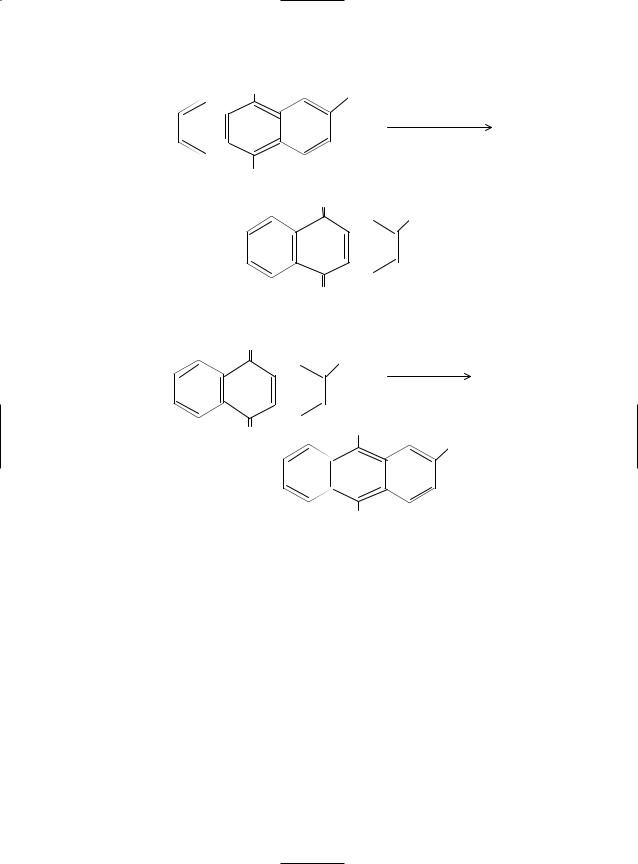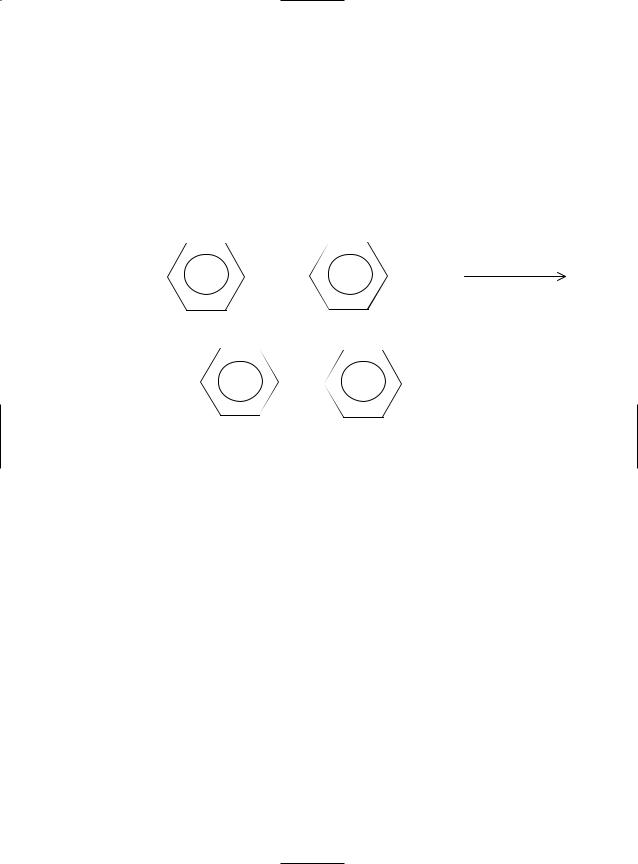
- •Hafnium
- •Hafnium Dioxide
- •Hafnium Tetrachloride
- •Hafnium Tetrafluoride
- •Helium
- •Holmium
- •Holmium Chloride
- •Holmium Oxide
- •Hydrazoic Acid
- •Hydrazine
- •Hydrazine Hydrate
- •Hydrazine Sulfate
- •Hydrazine Hydrochloride
- •Hydrogen
- •Hydrogen Bromide
- •Hydrogen Chloride
- •Hydrogen Cyanide
- •Hydrogen Fluoride
- •Hydrogen Iodide
- •Hydrogen Peroxide
- •Hydrogen Selenide

370 HYDROGEN IODIDE
very high polarity.
Toxicity
Both anhydrous hydrogen fluoride gas and hydrofluoric acid are highly corrosive and dangerous. Skin contact by even dilute aqueous HF can be severely injurious, causing deep ulceration with delayed effect. The acid can penetrate the skin and destroy tissues. It also is damaging to eyes, nose and lungs. Inhalation can cause fluorosis and pulmonary edema.
HYDROGEN IODIDE
[10034-85-2]
Formula: HI; MW 127.91; H—I bond energy 71.0 kcal/mol; internuclear distance 1.62Å.
Hydriodic acid is the aqueous solution of hydrogen iodide.
Uses
Hydrogen iodide is used to prepare a number of organic iodides. Hydriodic acid is a reducing agent; and is used in the preparation of inorganic iodide salts. It also is used in pharmaceuticals; disinfectants, and as a reagent in chemical analysis.
Physical Properties
Colorless gas; pungent acrid odor; fumes in moist air; nonflammable; density 5.613 g/L; liquefies at –35.55°C; density of liquid at –4.7°C 2.85 g/mL; solidifies at –50.8°C; critical temperature 150.85°C; critical pressure 82.01 atm; highly soluble in water, 234 g/100 g water at 10°C forming hydriodic acid; forms an azeotrope at 56.9% HI and 43.1% water; the azeotrope boils at 127°C and has density 1.709 g/mL; soluble in organic solvents.
Hydriodic acid is a colorless liquid when pure or freshly prepared; becomes yellowish or brown on exposure to light or air; strong acid odor; pH of 0.1 molar solution, 1.0; a 0.1 M aqueous solution is 95% ionized at 25°C; miscible with alcohols; dissolves iodine.
Thermochemical Properties |
|
|
∆Hf° |
6.33 kcal/mol |
|
∆Gf° |
0.406 kcal/mol |
|
S° |
49.38 cal/degree mol |
|
Cρ |
6.98 |
cal/degree mol |
∆Hvap |
4.723 |
kcal/mol |
∆Hfus |
0.686 |
kcal/mol |

HYDROGEN IODIDE 371
Preparation
Hydrogen iodide is prepared by direct combination of hydrogen and iodine vapor in the presence of platinum catalyst:
H2 + I2 Pt → 2HI
The compound is produced in commercial scale by reaction of iodine with hydrazine or hydrogen sulfide:
2I2 + N2H4 → 4HI + N2
I2 + H2S → 2HI + S
Hydriodic acid may be prepared by dissolving hydrogen iodide gas in water. The acid also may be obtained by electrolysis of iodine solution or by passing hydrogen sulfide into a suspension of iodine in water and boiling to expel excess sulfide. After boiling, the precipitated sulfur is removed by filtration through fritted glass plate or glass wool.
Hydriodic acid in small quantities may be prepared by adding water carefully to a solid mixture of red phosphorus and iodine.
Technical grade hydriodic acid is a 47% HI solution and usually has a brown color due to the presence of free iodine, produced by air oxidation of HI. Hydriodic acid should be stored in the dark to prevent photochemical decomposition, and free from air to prevent oxidation. The addition of 1.5% hypophosphorus acid (H3PO2) prevents oxidative decomposition.
Hydriodic acid also is commercially sold at 57% (azeotropic concentration) and 10% aqueous solutions.
Reactions
Hydrogen iodide gas dissociates on heating to hydrogen and iodine.
Hydrogen iodide in gaseous state or in the aqueous solution (hydriodic acid) reacts with most metals and their salts. Hydriodic acid dissolves metals and metal oxides, forming iodide salts:
Cu + 2HI → CuI2 + H2
CuO + 2HI → CuI2 + H2O
HI also reacts with metal salts, forming iodides:
KHCO3 + HI → KI + H2O + CO2
Hydriodic acid is a strong reducing agent, which readily reduces oxidizing substances. Reaction with oxygen yields iodine:

372 HYDROGEN PEROXIDE
HI + O2 → I2 + H2O
Hydrogen iodide adds to double bond of alkenes undergoing Markovnikov addition. The reaction is faster than that with other hydrogen halides:
CH2=CHCH3 + HI → CH3CHICH3
HI replaces iodine from organic iodo compounds:
CH3CH2I + HI → C2H6 + I2
Reactions with lower alcohols yield alkyl iodides:
CH3CH2OH + HI → CH3CH2I + H2O
Analysis
Elemental composition: I 99.21%, H 0.79%
The strength of hydriodic acid may be measured by titrating against a standard solution of base using color indicator, or by potentiometric titration. It can be analyzed by treatment with an oxidizing agent such as chlorine and the liberated iodine is titrated with a standard solution of sodium thiosulfate using starch indicator. The blue color of the solution decolorizes at the end point. Hydrogen iodide gas may be measured by GC-TCD using a very polar column. Also, it may be identified by GC/MS, the molecular ion having mass 127.
Toxicity
The gas is a strong irritant to eyes, nose and mucous membranes. The acid is corrosive to skin.
HYDROGEN PEROXIDE
[7722-84-1]
Formula: H2O2; MW 34.015
Structure: H—O—O—H, covalently bound, nonpolar molecule.
Synonyms: hydrogen dioxide; perone; hydroperoxide.

HYDROGEN PEROXIDE 373
History and Uses
Hydrogen peroxide was prepared first by Thenard in 1818. It has many industrial applications. Aqueous solutions at varying concentrations are used for bleaching fabrics, silks, furs, feathers and hair; as a dough conditioner; and a bleaching and oxidizing agent in foods; for cleaning metals; as a laboratory reagent for oxidation; as an antiseptic; in sewage and wastewater treatment; and in preparation of inorganic and organic peroxides. An 80% concentrated solution is used in rocket propulsion.
Physical Properties
Colorless liquid; pure compound or 90% solution unstable; bitter taste; density 1.463 g/mL; boils at 150.2°C; freezes at –0.43°C; vapor pressure 9.9 torr at 50°C and 121.5 torr at 100°C; viscosity 1.245 centipoise at 20°C; surface tension 80.4 dyn/cm at 20°C; miscible with water in all proportions; soluble in ether; densities of 30%, 70%, and 90% H2O2 solutions are 1.1081, 1.2839 and 1.3867 g/mL, respectively, at 25°C; freezing points at these concentrations are –25.7°C, –40.3°C and –11.5°C, respectively; and their boiling points are 106.2°C, 125.5°C and 141.3°C, respectively; decomposed by many organic solvents; pKa at 25°C is 11.62.
Thermochemical Properties |
|
∆Hf° (liq ) |
–44.885 kcal/mol |
∆Hf° (gas ) |
–32.576 kcal/mol |
∆Gf°(liq) |
–28.776 kcal/mol |
∆Gf° (gas) |
–25.239 kcal/mol |
S° (liq) |
55.62 cal/degree mol |
S° (liq) |
55.62 cal/degree mol |
S° (gas) |
37.05 cal/degree mol |
Cρ (liq) |
10.3 cal/degree mol |
∆Hvap (at 25°C) |
12.33 kcal/mol |
∆Hfus |
2.988 kcal/mol |
∆Hdissoc |
8.20 kcal/mol |
Preparation
Hydrogen peroxide is commercially produced by autooxidation of ethyl anthraquinol in a solvent such as toluene or ethylbenzene. The product ethyl anthraquinone is reduced by hydrogen over supported nickel or platinum catalyst to regenerate back the starting material, ethyl anthraquinol for a continuous production of H2O2. The reaction steps are:

374 HYDROGEN PEROXIDE
OH
C2H5
OH
(ethyl anthraquinol)
O
O
(ethyl anthraquinone)
O
C2H5
O |
OH |
|
OH
O2
ethylbenzene
C2H5
+ H2O2
H2
Pt/Ni catalyst
C2H5
Hydrogen peroxide may also be made by heating 2-propanol with oxygen at 100°C under 10 to 20 atm pressure:
(CH3)2CHOH −−−−−−−−O2 → (CH3)2C(OH)OOH → CH3COCH3 + H2O2
10-20 atm, 100°C
Vapor phase partial oxidation of hydrocarbons also yield H2O2. However, several by-products are generated, the separations of which make the process difficult and uneconomical.
Hydrogen peroxide may also be prepared by treating barium peroxide with dilute sulfuric acid:
BaO2 + 2H2SO4 → H2O2 + BaSO4
Another preparative method involves electrolytic conversion of aqueous sulfuric acid to peroxydisulfate followed by hydrolysis to H2O2 (Weissenstein process). The reaction steps are as follows:

|
|
HYDROGEN PEROXIDE 375 |
|
→ |
2 |
|
electrolysis |
|
|
O → H2 |
5 |
|
→ H2O2 |
|
An |
which |
no longer practiced commercially, |
involved |
phenyl |
|
|
|
+ O2 |
+ H2O2
Hydrogen peroxide obtained this way may contain many impurities, depending on the process used. Such impurities are removed by ion exchange, solvent extraction, and distillation. Dilute solutions of H2O2 may be purified and concentrated by fractional distillation at reduced pressures.
Reactions
The most important reactions of hydrogen peroxide involve oxidationreduction. It is a powerful oxidizing agent, both in acidic and basic solutions. Usually a 30% aqueous solution of H2O2 is used in oxidation. While oxidation with H2O2 in basic solution is fast, it is slow in acid solution. The half-reaction in acidic solution is:
H2O2 + 2H+ + 2e¯ → 2H2OE° = 1.78V
The half-reaction for the basic HO2¯ ion is
HO2¯ + H2O + 2e¯ → 3OH¯ E° = 0.87V
However, H2O2 will behave as a reducing agent only towards a very strong oxidizing agent, such as MnO4¯:
5H2O2 + 2MnO4¯ + 6H+ → 5O2 + 2Mn2+ + 8H2O
H2O2 + Cl2 → 2H+ + 2Cl¯ + O2

376 HYDROGEN PEROXIDE
H2O2 is more acidic than water in dilute aqueous solution. The equilibrium constant K at 20°C is about 1.5x10–12 for dissociation of H2O2 to H+ and HO2– The pH of a 50% aqueous solution is 4.3.
Aqueous solution of H2O2 decomposes into water and oxygen upon boiling:
2H2O2 → 2H2O + O2
The reaction is exothermic, ∆Hrxn being –23.66 kcal. In basic solution, such decomposition occurs very rapidly. Also, decomposition is catalyzed rapidly by trace amounts of transition metals. In aqueous media, Fe2+ ion decomposes H2O2 forming FeIII(OH)2+ and OH¯ ions, while in acetonitrile a “ferryl” ion, FeO22+ is formed initially, but it reverts to Fe2+ ion. The reactions are:
Fe2+ (aq) + H2O2 → FeIIIOH2+ (aq) + OH•
Fe2+ |
CH3CN |
+ H2O2 → FeO2+ + H2O |
FeO2+ + H2O2 → Fe2+ + O2 + H2O
(Cotton, F. A., G. Wilkinson, C. A. Murillo, and F. Bochmann. 1999. Advanced Inorganic Chemistry, 6th ed., New York: John Wiley).
Reaction with sulfuric acid yields monoperoxysulfuric acid. Reactions with many alkaline earth compounds yield peroxides of alkaline earth metals:
H2O2 + BaCl2 → BaO2 + 2HCl
H2O2 + Ba(OH)2 → BaO2 + 2H2O
Hydrogen peroxide undergoes substitution reactions with alkyl halides forming an organic peroxy acid or peroxide, depending on reaction conditions and molar ratios of reactants. The mechanism of such reactions are very complex. These reactions may be represented in the following equations:
H2O2 + RCl → ROOH + HCl
H2O2 + 2RCl → ROOR + 2HCl
Reactions with carboxylic acids yield peroxy acids:
RC(=O)OH + H2O2 |
→ RC(=O)OOH + H2O |
(carboxylic acid) |
(peroxy acid) |
Reaction with acetyl chloride yields diacetyl peroxide. Similar diacyl peroxides are formed from other acyl chlorides:
